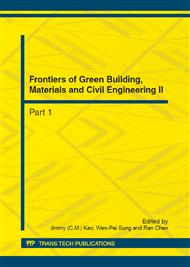p.1307
p.1311
p.1315
p.1320
p.1324
p.1329
p.1334
p.1338
p.1342
Preserving the Sense of Place: A Case Study of Hawaii State Capitol Building
Abstract:
By featuring buildings as pure objects, modern architecture neglects the implications of what happens in between buildings [1], which is resulting in the disappearance of character of the unique places. Hawaii State Capitol building is a symbol of modern architecture in downtown Honolulu, it adopts modern aesthetic and functional design to reflect the aspirations of a modern and progressive society, yet it is deeply rooted to Hawaiian tropical climate, natural landscape, multi-culture and history. The Capitol building has been merged within the building’s geographical context and culture context. It preserves the Hawaiian sense of place; fosters the sense of belonging for local habitants. The aim of this paper is to investigate how modern architecture can help individual find his place in the midst of nature and in the midst of community under the pressure of social and economic development by taking Hawaii State Capitol building as an example.
Info:
Periodical:
Pages:
1324-1328
Citation:
Online since:
August 2012
Authors:
Price:
Сopyright:
© 2012 Trans Tech Publications Ltd. All Rights Reserved
Share:
Citation:


